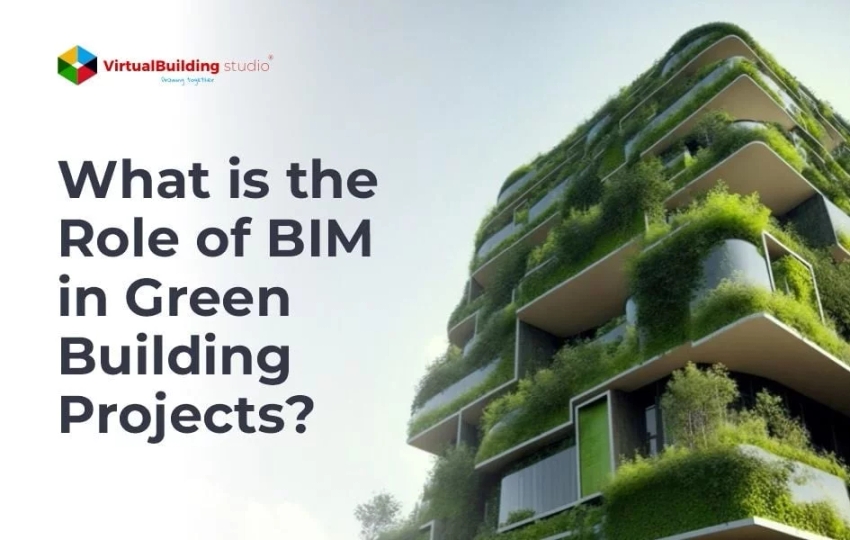
The new age is exploring green architecture is an apt saying for the developing world that seems to always be pushing ahead but leaving the environment behind. While climate change is caused due to many factors, buildings play a huge role in its gradual increase.
Studies show that 36% of the world energy usage is by buildings and construction works, and 27% of the carbon footprint is due to traditionally built buildings. Green building is, therefore, a solution for this impending danger.
Urban heat islands above growing cities, pollution from factories, and carbon emissions from buildings overall play major roles in climate change.
In this context, green buildings can significantly reduce their impact. At a macro level, green buildings have the potential to make energy savings of 50% (UNEP, 2005). At the micro-level, IGBC and LEED have certified that buildings can make energy savings of 40-50% and 20-30% respectively.
What Makes a Building Green?
Building Aspect:
Using construction materials, equipment, and processes that do not consume large amounts of energy and electricity can create an ecological structure. Green buildings would also require on-site production rather than factory-made, to reduce the overall environmental impacts.
Local Materials:
Green Buildings reuse materials from previous works, reduce materials that directly impact the environment, and recycle materials from demolished works.
Water Management:
A green building has rainwater harvesting and water treatment systems that would treat and recycle the water appropriately for reuse. They would also employ efficient appliances that would regulate the quantity of water used.
Landscape and Nature Centric Design:
Green Buildings use greenery in the interiors and in the landscape to create pleasant microclimates within the building. Having plants and trees on site also ensures fresh and clean air, while reducing CO2 levels on site.
Energy Efficiency:
Overall HVAC and electrical energy is reduced by installing green-rated appliances that take up less energy and load. Green buildings also use renewable sources of energy like solar panels.
Smart Facade Design:
They usually have facades that can control the effect of the outer environment to keep interiors energy efficient. The use of louvres, smart facades, etc. can make a huge impact on the amount of energy used by the building. Using tools like BIM can be an asset to create thorough ecological structures.
The Concept of BIM Modelling in Green Architecture
Building Information Modelling or BIM can be used to reduce energy consumption and the impact of the building on the environment. BIM provides specific workflows and modelling tips that can make a building a Green Building.
Many developed countries like the UK, USA, France, Singapore, Germany, UAE, and China have adopted BIM into their construction industries. Green buildings are usually deemed as such by certification like LEED.
Leadership in Energy and Environmental Design (LEED) is a building rating system that certifies buildings of all types in terms of their energy consumption, environmental impact, cost and construction effectiveness. Having an organization like this validates the impact of green buildings and their influence on the environment, promoting the emergence of more green buildings across the world.
BIM has become the 21st century’s biggest game-changer due to its versatility and finesse. BIM is essentially used in 4 aspects: namely, land, water, energy, and material.
- Land :BIM regulates and simulates the progress of construction as well as site processes.
- Water : BIM aids inefficient use of water and optimizes the design in water supply, drainage, and planning.
- Energy :BIM controls the energy consumption within the building and analyses deficits.
- Material :Keeps a check on the consumption and use of materials at all stages of the project.
Perks of Using BIM
BIM is extremely reliable in producing simulation results of the building which provides a deep insight into the energy used by it.
It also provides engineering performance analytics and a canvas for parametric modelling to create complex workable forms. The sustainable performance of the structure can be mapped along with the optimization of different elements of the building. Different climatic aspects like daylighting, illuminance, shadows, humidity etc. can be analyzed using BIM.
The dynamicity of this tool to cater to a diverse range of facets has made it a go-to solution in the AEC Industry.
Why is BIM Modelling relevant in Sustainability?
- Provides transparency and clarity at every stage
- Has deep insights on material technology
- Efficient designing on and off-site’
- Saves time, money, resources and thus, the environment
- Monitors the performance before and after occupancy
- Optimizes performance of the building through an efficient system.
- Minimizes Waste and thus, saves cost.
- Enhances and optimizes design features due to its comprehensive working.
What Next for the AEC Industry and Sustainability?
BIM can analyze and optimize any building situation to such an extent that architecture will solely rely on it for post-conceptual work.
Software like BIM has an enormous scope not only in the future of environmental design but also in futuristic architecture for the next few generations. BIM is just a precursor to the advanced construction that awaits us like 3D printed houses or building houses on Mars using Bamboo with the help of advanced parametric modelling software.




